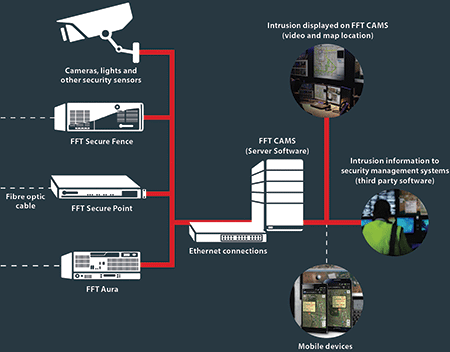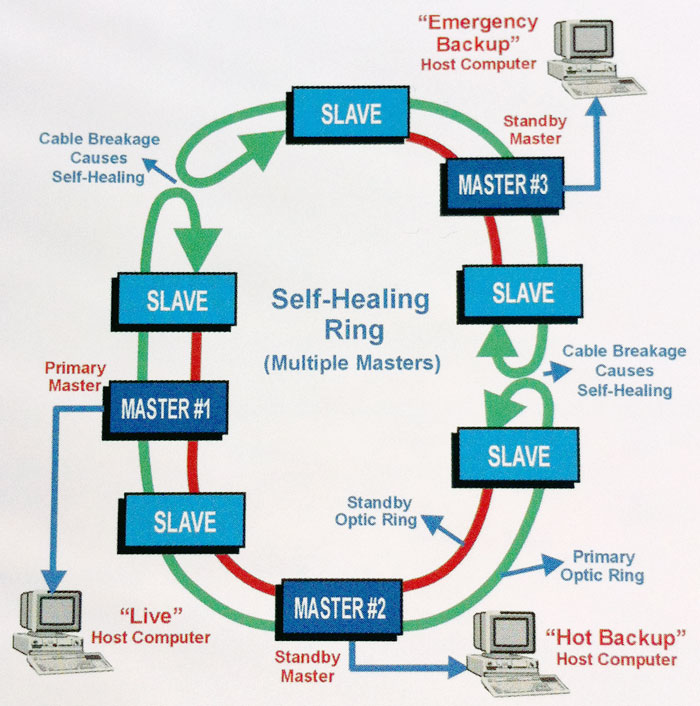Secure Your Residential Property With Dependable Fiber Optic Security Solutions
In a period where security risks are progressively advanced, the requirement for efficient protection solutions is critical. Fiber optic safety and security systems stand out by providing outstanding dependability and performance, leveraging innovative light transmission modern technology to enhance security capacities. security fibers. Comprehending the ins and outs of fiber optic safety and security can illuminate the course to guarding your building extra successfully.
Advantages of Fiber Optic Security
Fiber optic protection options provide a range of benefits that make them progressively important in today's electronic landscape. One of the most substantial benefits is their superior data transfer capacity, which permits the transmission of big amounts of information over long ranges without substantial signal destruction. This capacity is especially beneficial for security systems that count on high-def video monitoring and real-time monitoring.
Additionally, fiber optic cords are naturally much more secure than traditional copper circuitry. They are unsusceptible to electromagnetic interference, making them less susceptible to hacking or eavesdropping. This enhanced protection is critical for safeguarding sensitive data and keeping the honesty of monitoring systems.
Additionally, fiber optics are more sturdy and resistant to environmental elements, such as dampness and temperature level fluctuations, making sure long-term dependability and minimized upkeep costs. The lightweight nature of fiber optic wires likewise simplifies setup procedures, enabling better flexibility in system style.
Exactly How Fiber Optic Equipment Job
In contemporary safety and security applications, the operation of fiber optic systems relies upon the principles of light transmission via adaptable glass or plastic fibers. These fibers are designed to bring light signals over fars away with marginal loss, making them excellent for sending data connected to security surveillance. The core of the fiber, bordered by a cladding material, ensures that light signals remain had within the core with a phenomenon known as complete interior reflection.
When incorporated into security systems, fiber optic wires can transfer data from numerous sensors, such as cameras, activity detectors, and alarms, to a main tracking terminal. The high bandwidth capacity of optical fiber enables the transmission of huge amounts of data simultaneously, making it possible for real-time monitoring and timely response to possible dangers.

Types of Fiber Optic Safety Solutions
Various kinds of fiber optic safety and security solutions have arised to enhance security and security throughout different settings. One famous solution is fiber optic boundary invasion detection systems (PIDS), designed to check and protect residential or commercial property limits via the discovery of vibrations and disturbances along fiber optic cables. These systems give real-time notifies, allowing punctual reactions to unapproved accessibility attempts.
One more efficient remedy is fiber optic video monitoring. This modern technology leverages high-def cameras linked by means of fiber optic wires to transmit video data over visit our website lengthy ranges without substantial loss of quality. This arrangement is especially valuable in expansive areas, such as airports and industrial sites, where standard copper cords might fail.
In addition, fiber optic sensing units are increasingly utilized for environmental monitoring, spotting modifications in temperature, pressure, or acoustic signals that could suggest safety breaches my site or dangerous conditions. These sensors provide high sensitivity and accuracy, making them perfect for vital facilities security.

Installment and Upkeep Tips
Effective installment and upkeep of fiber optic safety and security solutions are critical for guaranteeing their ideal efficiency and durability. Fiber optic cables need to be directed securely, avoiding sharp bends or twists that could jeopardize their integrity.
Throughout installation, it is suggested to carry out thorough screening of the system to confirm that all elements are functioning appropriately. Regular upkeep checks should be arranged to inspect the fiber optic cords for any kind of indications of wear or damages, as well as to make certain that connections stay secure. Cleaning up the adapters periodically is likewise vital to avoid signal loss due to dirt or particles.
Additionally, maintaining an upgraded inventory of set up parts and their specifications can facilitate simpler troubleshooting and upgrades. By sticking to these installation and maintenance pointers, homeowner can make best use of the effectiveness of their fiber optic safety solutions, guaranteeing a reliable defense against possible risks.
Contrasting Expenses and Performance
When evaluating fiber optic protection solutions, comprehending the equilibrium between expenses and efficiency becomes critical (security fibers). Organizations has to consider the upfront investment, continuous upkeep expenditures, and the long-term value these systems supply. While fiber optic systems might call for a greater initial setup expense compared to standard copper electrical wiring, their durability and reduced susceptibility to electromagnetic interference frequently equate to reduced maintenance expenses in time
Efficiency is another crucial element; fiber optic safety and security systems provide enhanced information transmission rates and boosted integrity. They can cover bigger ranges without signal deterioration, making them optimal for expansive properties or remote areas. The high read review bandwidth ability supports sophisticated security applications, such as high-def video security and real-time monitoring, which are crucial for detailed security administration.
Ultimately, the option between expense and performance ought to be led by certain security demands and run the risk of assessments. Organizations needs to analyze their distinct needs, considering aspects like building size, safety hazards, and technological improvements. By performing an extensive cost-benefit evaluation, stakeholders can make enlightened decisions that line up with their protection objectives while guaranteeing an audio financial investment in fiber optic modern technology.
Conclusion
In final thought, fiber optic safety and security solutions offer substantial benefits in terms of performance, reliability, and resistance to ecological interferences. Ultimately, the adoption of fiber optic modern technology stands for a forward-thinking technique to protecting residential or commercial properties versus progressing safety and security threats.